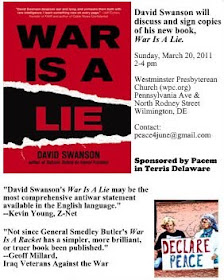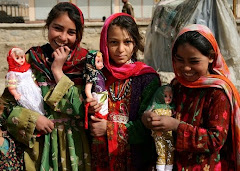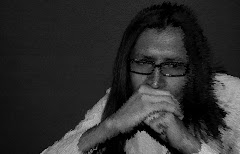by: Kate Clark
The New York Times piece ‘Top Afghans Tied to ’90s Carnage, Researchers Say’ ‘revealed’ what everyone knows and rarely says, that many of today’s senior Afghan politicians have murky pasts. Talking about the war crimes of the last thirty years has proved difficult for Afghans and the international powers alike. The decision, in 2005, to put together a Conflict Mapping Report of the alleged war crimes from 1978 and the communist coup d’état of 1978 to December 2001 and the transition of power to Hamed Karzai was taken partly to help the nation discuss its troubled history. The Times article raised the possibility of those senior politicians trying to block publication of the report. Unfortunately, says AAN analyst, Kate Clark, the article was so peppered with inaccuracies that it risked giving ammunition to those who want to bury the crimes of the past together with the report. She also asks why did the Times yet again duck mention of the alleged presence of US Special Forces at one of the massacre sites.

In a guest blog for AAN last week, Ahmed Rashid accused The New York Times of arrogance in claiming an exclusive on a subject which many other journalists and human rights activists had been risking their lives to cover for years. For me, reading through the piece, it was the inaccuracies which were glaring – and surprising because the reporter, Rod Nordland, is usually excellent.
People in Kabul, including journalists, whom I spoke to about the article had assumed the Nordland had read a leaked copy of the Conflict Mapping Report, the ‘monumental’(1) work put together by the Afghanistan Independent Human Rights Commission (AIHRC) detailing the war crimes of the 1978-2001 period. However, if you read his piece carefully, he said only that he spoke to Afghan and foreign sources who had worked on the report. This is important because almost all the allegations he makes are garbled in some way. It is not that the men he names necessarily have clean hands, but that Nordland makes factual errors, including attributing crimes to men when there is no evidence of a link. No-one, apart from its authors, has read the Conflict Mapping Report and as Nordland’s sources are anonymous, it is impossible to judge where the inaccuracies came in. However, it is difficult to imagine anyone with any knowledge of the war crimes of the last thirty years making the basic errors which feature in the Times piece.
As the Times is a paper of record and Nordland’s allegations are serious, I wrote to the foreign editor asking for corrections. The paper made only two, I thought, therefore, that readers might find it useful if I detailed what I think the factual errors in the piece are (drawing on the good published sources on the war crimes of 1978-2001, see footnote 2, below, as well as my own background) and what the consequences of it might be:
1) [The Conflict Mapping Report covers] human rights abuses in Afghanistan the Soviet era in the ’80s to the fall of the Taliban in 2001, according to researchers and officials who helped compile the study over the past six years.
The Report starts with the coup of 1978, not the Soviet invasion. Indeed, it is often forgotten that the pre-Soviet era featured the most concentrated blood-letting of the entire war, with mass arbitrary detention, torture and killings. An estimated 100,000 people were disappeared by the Taraki and Amin governments; they included ulema, students, school pupils, suspected Parchamis, Maoists, Islamists and members of the old elites, both in Kabul and in the provinces, including tribal elders. Entire extended families were wiped out. This is important. Otherwise, anyone reading the Times article could be forgiven for thinking the Conflict Mapping Report focuses on the war crimes of the mujahedin/Northern Alliance and to a lesser extent, the Taleban only. (In response to my letter, the Times admitted this error, saying it had crept in at the editing stage.)
2) Named specifically in the [Conflict Mapping] report as responsible for war crimes in massacres of prisoners in Mazar-i-Sharif are two Taliban commanders now held at the Guantánamo Bay prison camp — Mullah Fazul Akhund and Mullah Khairullah Khirkawa (sic) — and whose release is thought to be a condition of negotiations with the insurgent group.
This allegation is simply not true. Indeed, it seems the Times has mixed up the Mazar massacres.
In 1998, the Taleban massacred an estimated 6000 people in Mazar(3); they were predominantly civilians, but some fighters from Hezb-e Wahdat who were prisoners – who had been captured or had surrendered(4) – are believed to have been summarily executed.(5) In command of this massacre was Mulla Niazi.
Khairkhwa was in Herat at the time as governor. No sources have placed him in Mazar at the time of the 1998 massacre. Indeed, he is not accused of any crimes that I know of, with one possible exception: 35 to 45 civilians were killed in Dehdadi, a district just outside Mazar-e Sharif, by retreating Taleban and/or their local Hezb-e Islami allies in 1997, after the Taleban lost Mazar. Khairkhwa may have had command responsibility; he was in charge of the part of the Taleban army which retreated from Mazar to the west and may have ordered or failed to prevent the killings or failed to discipline subordinates who carried them out.
The victims in Dehdadi were Hazara civilians and they were killed in particularly brutal ways. However - and this is number 3 in the list of mistakes - the Times misattributes these killings to ‘General Dostum and his Hazara allies.’
There is also no evidence pointing to Mulla Fazl having been in Mazar at the time of the 1998 massacre, either. However, he is accused of many other war crimes, including: as a field commander, along with the late Mulla Dadullah, leading the wanton destruction of civilian property and associated killings in the Shomali in 1999 and; as Army Chief of Staff, having strategic command and control responsibility for the massacre of civilians in Yakaolang, January 2001 and the village burnings and associated killings in Northern Hazarajat later that year.
As neither Fazl nor Khairkhwa is at liberty to defend himself, it seems especially important to be scrupulous about reporting allegations against them. Khairkhwa actually had a comparatively good reputation during his time in the Taleban leadership. For details on both men, see an earlier AAN blog which has biographies of all five senior Taleban in Guantanamo who have been talked about for possible release as part of peace negotiations.
For the record, there were two notable massacres of prisoners in Mazar, but the victims in both cases were Taleban. In 1997, General Malek, who had ousted Dostum and invited the Taleban to Mazar, is accused of ordering the massacre of at least 3000 Taleban prisoners of war. Then there was the November 2001 massacre of Taleban prisoners, which is referred to later in the Times piece:
4) In all, 13 mass graves have been identified in the Mazar-i-Sharif area, including one detailed by human rights workers in the Dasht-e-Leili desert in the neighboring Jawjzan Province, believed to contain 2,000 Taliban prisoners slaughtered by General Dostum’s forces.
In 2001, an unknown number of surrendered Taleban fighters (estimates range from several hundred to two thousand) were crammed into containers and transported west to Jawzjan; they died through suffocation, thirst or when the containers were shot at from outside. Given the history of container deaths in the Afghan war, it could reasonably have been predicted that men neglected in this way would die. The prisoners were under the control of forces loyal to General Dostum. There is no evidence that Dostum ordered the killing, although at the least, he may well have been guilty of command responsibility by omission (ie, failing to prevent subordinates from carrying out war crimes or failing to discipline them afterwards). The accusation that he later ordered the destruction of the site and the evidence they contained is much firmer.
5) Remarkably, however, the Times makes no mention of the credible allegation that US special operations forces were present at the site in 2001 and may have been complicit in the killings. This is the second time the paper has failed to mention this. In 2009, James Risen reported on how the Bush government had resisted investigating the massacre. However, the allegation that US special operations forces had been present, made by one of Risen’s main sources for the story, an FBI agent called Dell Spry, did not make it into the published piece.
When President Obama was asked about Risen’s story, he promised an investigation, telling CNN, ‘… if it appears that our conduct in some way supported violations of the laws of war, then I think that, you know, we have to know about that.’(6) The wording was certainly strange – was he just referring to the resistance to investigate US allies or had he been briefed on the Special Forces allegation - which would suggest the Times had discussed this before they published? If Obama’s investigation was carried out, it has never been made public nor, as far as I know, referred to officially again. (For sources on the 2001 massacre and possible US military presence, see here, here, here and here.)
Nordland’s reporting on the US currently objecting to the release of the Conflict Mapping Report is interesting and important. As it has done for the last 11 years, Washington continues to argue that now is not the right time to discuss war crimes and that such talk will ‘reopen all the old wounds’. (Don’t mention the war crimes – until 2014 when we’re out of the door was the clear message of the un-named embassy official quoted in the Timespiece.)
6) A researcher for the Afghan rights commission who investigated both of the graves in Khalid Ibn al-Walid [a neighbourhood of Mazar] said the victims were killed by General Noor’s [Ustad Atta] political party [Jamiat-e Islami], which had what the researcher called a ‘human slaughterhouse’ on the site in the 1990s, as well as by the Taliban, who later took over the same facility for the same purpose.
This allegation looks unsound to me: if Atta (or indeed the Taleban) had a ‘human slaughterhouse’ in Mazar, it seems likely those of us who follow war crimes would have heard about it. For the record, the one credible allegation I have seen against Atta personally from the pre-2001 period is that he ordered his forces to fire on unarmed demonstrators in Mazar in the period after the Taleban first took and then lost Mazar in 1997 and finally took it the following year. At the same time, it should be stressed that all the war crimes reporting on this period details accusations that forces loyal to Atta (hardly a ‘political party’, although they belonged to Jamiat indeed) and those of Dostum and Muhaqiq carried out ‘criminally-minded’ abuses of the civilian population, including looting, murders and forced marriage and rape. This, along with their infighting (the Times does refer to how they ‘fought bitterly among themselves’), was so appalling that the civilian population did not stand with them against the Taleban as they had done in 1997; when, in August 1998, the Taleban again massed to take Mazar, it fell.
Correcting the factual mistakes in the Times article is important because, not only are the allegations serious, but readers may have come away with the impression that the Conflict Mapping Report is sloppy or that the AIHRC has concentrated on the alleged crimes of the mujahedin/United Front (also known as the Northern Alliance). A spokesman for one of the successor organisations to the United Front has indeed reacted exactly that way very recently. It is unfortunate that the Times may have given ammunition to the very powerful politicians named in the article whom we can assume would like the Conflict Mapping Report not to be published.
It is an irony of course, that these men are powerful today in no small part because of the US intervention in 2001 and the arms and continuing political support Washington has given most of them. Those of us who did warn in the autumn of 2001 about the murky background of many of the men chosen to be America’s anti-Taleban allies can surely be forgiven for pointing out that the Times’ revelations, far from being an exclusive, are actually 11 years too late.
(1) The word is the New York Times’. This does seem accurate.
(2) Until the Conflict Mapping Report is (I hope) published, the best published sources on the war crimes of 1978-2001 are by the Afghanistan Justice Project and the UN (another Conflict Mapping Report which the UN suppressed, although it was briefly and inadvertently published and was cached) and, additionally for the Kabul civil war, by Human Rights Watch:
• The UN Mapping Report (2005)
• The Afghanistan Justice Project's Casting Shadows: War Crimes and Crimes against Humanity:1978-2001 Documentation and analysis of major patterns of abuse in the war in Afghanistan (2005)
• Human Rights Watch, Blood Stained Hands: Past Atrocities in Kabul and Afghanistan's Legacy of Impunity (2005)
You can also find earlier sources (including by the UN, Helsinki Watch, Amnesty International, Human Rights Watch, the ICRC and the media) in these reports.
(3) The following estimates were made: 2000 (Human Rights Watch), 6-8000 (Ahmed Rashid), who also wrote: ‘The UN and ICRC later estimated between 5000 and 6000 people were killed.' (Taleban: Militant Islam, Oil and Fundamentalism in Central Asia).
(4) Rashid says there were about 1500 Wahdat fighters, out of whom only 100 survived, but it is not known how many died in combat or were executed.
(5) Under the laws of armed conflict, soldiers who are hors de combat, ie they are in the power of the enemy because they are wounded or captured, are protected persons.
(6) The full excerpt (broadcast on 12 July 2009) from a CNN interview is:
ANDERSON COOPER: And now it seems clear that the Bush Administration resisted efforts to pursue investigations of an Afghan warlord named General Dostum, who was on the CIA payroll. It's now come out, there were hundreds of Taliban prisoners under his care who got killed…
PRESIDENT OBAMA: Right.
ANDERSON COOPER: …some were suffocated in a steel container, others were shot, possibly buried in mass graves. Would you support – would you call for – an investigation into possible war crimes in Afghanistan?
PRESIDENT OBAMA: Yeah, the indications that this had not been properly investigated just recently was brought to my attention. So what I've asked my national security team to do is to collect the facts for me that are known. And we'll probably make a decision in terms of how to approach it once we have all the facts gathered up.
ANDERSON COOPER: But you wouldn't resist categorically an investigation?
PRESIDENT OBAMA: I think that, you know, there are responsibilities that all nations have even in war. And if it appears that our conduct in some way supported violations of the laws of war, then I think that, you know, we have to know about that.
People in Kabul, including journalists, whom I spoke to about the article had assumed the Nordland had read a leaked copy of the Conflict Mapping Report, the ‘monumental’(1) work put together by the Afghanistan Independent Human Rights Commission (AIHRC) detailing the war crimes of the 1978-2001 period. However, if you read his piece carefully, he said only that he spoke to Afghan and foreign sources who had worked on the report. This is important because almost all the allegations he makes are garbled in some way. It is not that the men he names necessarily have clean hands, but that Nordland makes factual errors, including attributing crimes to men when there is no evidence of a link. No-one, apart from its authors, has read the Conflict Mapping Report and as Nordland’s sources are anonymous, it is impossible to judge where the inaccuracies came in. However, it is difficult to imagine anyone with any knowledge of the war crimes of the last thirty years making the basic errors which feature in the Times piece.
As the Times is a paper of record and Nordland’s allegations are serious, I wrote to the foreign editor asking for corrections. The paper made only two, I thought, therefore, that readers might find it useful if I detailed what I think the factual errors in the piece are (drawing on the good published sources on the war crimes of 1978-2001, see footnote 2, below, as well as my own background) and what the consequences of it might be:
1) [The Conflict Mapping Report covers] human rights abuses in Afghanistan the Soviet era in the ’80s to the fall of the Taliban in 2001, according to researchers and officials who helped compile the study over the past six years.
The Report starts with the coup of 1978, not the Soviet invasion. Indeed, it is often forgotten that the pre-Soviet era featured the most concentrated blood-letting of the entire war, with mass arbitrary detention, torture and killings. An estimated 100,000 people were disappeared by the Taraki and Amin governments; they included ulema, students, school pupils, suspected Parchamis, Maoists, Islamists and members of the old elites, both in Kabul and in the provinces, including tribal elders. Entire extended families were wiped out. This is important. Otherwise, anyone reading the Times article could be forgiven for thinking the Conflict Mapping Report focuses on the war crimes of the mujahedin/Northern Alliance and to a lesser extent, the Taleban only. (In response to my letter, the Times admitted this error, saying it had crept in at the editing stage.)
2) Named specifically in the [Conflict Mapping] report as responsible for war crimes in massacres of prisoners in Mazar-i-Sharif are two Taliban commanders now held at the Guantánamo Bay prison camp — Mullah Fazul Akhund and Mullah Khairullah Khirkawa (sic) — and whose release is thought to be a condition of negotiations with the insurgent group.
This allegation is simply not true. Indeed, it seems the Times has mixed up the Mazar massacres.
In 1998, the Taleban massacred an estimated 6000 people in Mazar(3); they were predominantly civilians, but some fighters from Hezb-e Wahdat who were prisoners – who had been captured or had surrendered(4) – are believed to have been summarily executed.(5) In command of this massacre was Mulla Niazi.
Khairkhwa was in Herat at the time as governor. No sources have placed him in Mazar at the time of the 1998 massacre. Indeed, he is not accused of any crimes that I know of, with one possible exception: 35 to 45 civilians were killed in Dehdadi, a district just outside Mazar-e Sharif, by retreating Taleban and/or their local Hezb-e Islami allies in 1997, after the Taleban lost Mazar. Khairkhwa may have had command responsibility; he was in charge of the part of the Taleban army which retreated from Mazar to the west and may have ordered or failed to prevent the killings or failed to discipline subordinates who carried them out.
The victims in Dehdadi were Hazara civilians and they were killed in particularly brutal ways. However - and this is number 3 in the list of mistakes - the Times misattributes these killings to ‘General Dostum and his Hazara allies.’
There is also no evidence pointing to Mulla Fazl having been in Mazar at the time of the 1998 massacre, either. However, he is accused of many other war crimes, including: as a field commander, along with the late Mulla Dadullah, leading the wanton destruction of civilian property and associated killings in the Shomali in 1999 and; as Army Chief of Staff, having strategic command and control responsibility for the massacre of civilians in Yakaolang, January 2001 and the village burnings and associated killings in Northern Hazarajat later that year.
As neither Fazl nor Khairkhwa is at liberty to defend himself, it seems especially important to be scrupulous about reporting allegations against them. Khairkhwa actually had a comparatively good reputation during his time in the Taleban leadership. For details on both men, see an earlier AAN blog which has biographies of all five senior Taleban in Guantanamo who have been talked about for possible release as part of peace negotiations.
For the record, there were two notable massacres of prisoners in Mazar, but the victims in both cases were Taleban. In 1997, General Malek, who had ousted Dostum and invited the Taleban to Mazar, is accused of ordering the massacre of at least 3000 Taleban prisoners of war. Then there was the November 2001 massacre of Taleban prisoners, which is referred to later in the Times piece:
4) In all, 13 mass graves have been identified in the Mazar-i-Sharif area, including one detailed by human rights workers in the Dasht-e-Leili desert in the neighboring Jawjzan Province, believed to contain 2,000 Taliban prisoners slaughtered by General Dostum’s forces.
In 2001, an unknown number of surrendered Taleban fighters (estimates range from several hundred to two thousand) were crammed into containers and transported west to Jawzjan; they died through suffocation, thirst or when the containers were shot at from outside. Given the history of container deaths in the Afghan war, it could reasonably have been predicted that men neglected in this way would die. The prisoners were under the control of forces loyal to General Dostum. There is no evidence that Dostum ordered the killing, although at the least, he may well have been guilty of command responsibility by omission (ie, failing to prevent subordinates from carrying out war crimes or failing to discipline them afterwards). The accusation that he later ordered the destruction of the site and the evidence they contained is much firmer.
5) Remarkably, however, the Times makes no mention of the credible allegation that US special operations forces were present at the site in 2001 and may have been complicit in the killings. This is the second time the paper has failed to mention this. In 2009, James Risen reported on how the Bush government had resisted investigating the massacre. However, the allegation that US special operations forces had been present, made by one of Risen’s main sources for the story, an FBI agent called Dell Spry, did not make it into the published piece.
When President Obama was asked about Risen’s story, he promised an investigation, telling CNN, ‘… if it appears that our conduct in some way supported violations of the laws of war, then I think that, you know, we have to know about that.’(6) The wording was certainly strange – was he just referring to the resistance to investigate US allies or had he been briefed on the Special Forces allegation - which would suggest the Times had discussed this before they published? If Obama’s investigation was carried out, it has never been made public nor, as far as I know, referred to officially again. (For sources on the 2001 massacre and possible US military presence, see here, here, here and here.)
Nordland’s reporting on the US currently objecting to the release of the Conflict Mapping Report is interesting and important. As it has done for the last 11 years, Washington continues to argue that now is not the right time to discuss war crimes and that such talk will ‘reopen all the old wounds’. (Don’t mention the war crimes – until 2014 when we’re out of the door was the clear message of the un-named embassy official quoted in the Timespiece.)
6) A researcher for the Afghan rights commission who investigated both of the graves in Khalid Ibn al-Walid [a neighbourhood of Mazar] said the victims were killed by General Noor’s [Ustad Atta] political party [Jamiat-e Islami], which had what the researcher called a ‘human slaughterhouse’ on the site in the 1990s, as well as by the Taliban, who later took over the same facility for the same purpose.
This allegation looks unsound to me: if Atta (or indeed the Taleban) had a ‘human slaughterhouse’ in Mazar, it seems likely those of us who follow war crimes would have heard about it. For the record, the one credible allegation I have seen against Atta personally from the pre-2001 period is that he ordered his forces to fire on unarmed demonstrators in Mazar in the period after the Taleban first took and then lost Mazar in 1997 and finally took it the following year. At the same time, it should be stressed that all the war crimes reporting on this period details accusations that forces loyal to Atta (hardly a ‘political party’, although they belonged to Jamiat indeed) and those of Dostum and Muhaqiq carried out ‘criminally-minded’ abuses of the civilian population, including looting, murders and forced marriage and rape. This, along with their infighting (the Times does refer to how they ‘fought bitterly among themselves’), was so appalling that the civilian population did not stand with them against the Taleban as they had done in 1997; when, in August 1998, the Taleban again massed to take Mazar, it fell.
Correcting the factual mistakes in the Times article is important because, not only are the allegations serious, but readers may have come away with the impression that the Conflict Mapping Report is sloppy or that the AIHRC has concentrated on the alleged crimes of the mujahedin/United Front (also known as the Northern Alliance). A spokesman for one of the successor organisations to the United Front has indeed reacted exactly that way very recently. It is unfortunate that the Times may have given ammunition to the very powerful politicians named in the article whom we can assume would like the Conflict Mapping Report not to be published.
It is an irony of course, that these men are powerful today in no small part because of the US intervention in 2001 and the arms and continuing political support Washington has given most of them. Those of us who did warn in the autumn of 2001 about the murky background of many of the men chosen to be America’s anti-Taleban allies can surely be forgiven for pointing out that the Times’ revelations, far from being an exclusive, are actually 11 years too late.
(1) The word is the New York Times’. This does seem accurate.
(2) Until the Conflict Mapping Report is (I hope) published, the best published sources on the war crimes of 1978-2001 are by the Afghanistan Justice Project and the UN (another Conflict Mapping Report which the UN suppressed, although it was briefly and inadvertently published and was cached) and, additionally for the Kabul civil war, by Human Rights Watch:
• The UN Mapping Report (2005)
• The Afghanistan Justice Project's Casting Shadows: War Crimes and Crimes against Humanity:1978-2001 Documentation and analysis of major patterns of abuse in the war in Afghanistan (2005)
• Human Rights Watch, Blood Stained Hands: Past Atrocities in Kabul and Afghanistan's Legacy of Impunity (2005)
You can also find earlier sources (including by the UN, Helsinki Watch, Amnesty International, Human Rights Watch, the ICRC and the media) in these reports.
(3) The following estimates were made: 2000 (Human Rights Watch), 6-8000 (Ahmed Rashid), who also wrote: ‘The UN and ICRC later estimated between 5000 and 6000 people were killed.' (Taleban: Militant Islam, Oil and Fundamentalism in Central Asia).
(4) Rashid says there were about 1500 Wahdat fighters, out of whom only 100 survived, but it is not known how many died in combat or were executed.
(5) Under the laws of armed conflict, soldiers who are hors de combat, ie they are in the power of the enemy because they are wounded or captured, are protected persons.
(6) The full excerpt (broadcast on 12 July 2009) from a CNN interview is:
ANDERSON COOPER: And now it seems clear that the Bush Administration resisted efforts to pursue investigations of an Afghan warlord named General Dostum, who was on the CIA payroll. It's now come out, there were hundreds of Taliban prisoners under his care who got killed…
PRESIDENT OBAMA: Right.
ANDERSON COOPER: …some were suffocated in a steel container, others were shot, possibly buried in mass graves. Would you support – would you call for – an investigation into possible war crimes in Afghanistan?
PRESIDENT OBAMA: Yeah, the indications that this had not been properly investigated just recently was brought to my attention. So what I've asked my national security team to do is to collect the facts for me that are known. And we'll probably make a decision in terms of how to approach it once we have all the facts gathered up.
ANDERSON COOPER: But you wouldn't resist categorically an investigation?
PRESIDENT OBAMA: I think that, you know, there are responsibilities that all nations have even in war. And if it appears that our conduct in some way supported violations of the laws of war, then I think that, you know, we have to know about that.








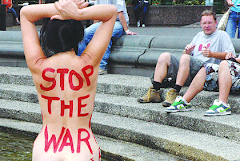
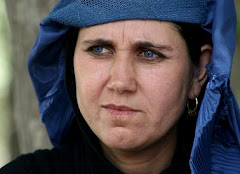.jpg)

